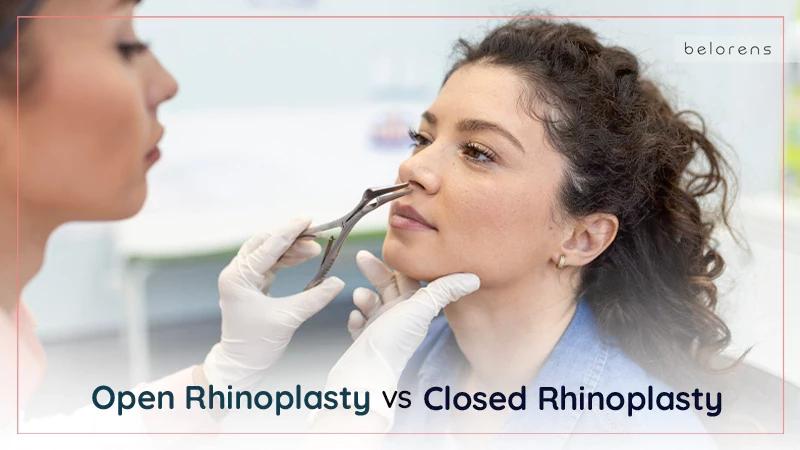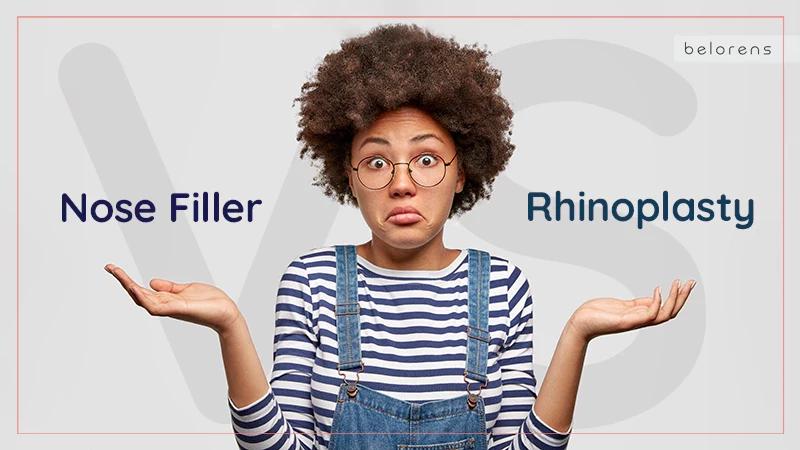Published on 7 Apr 2024 | Last updated on 15 June 2024
Rhinoplasty Recovery Tips: 15 Essentials to Guide You to a Swift Nasal Recovery
- ByMedical Content Team
- Medically Reviewed byDr. Sabine Kulhanek
Fact checked
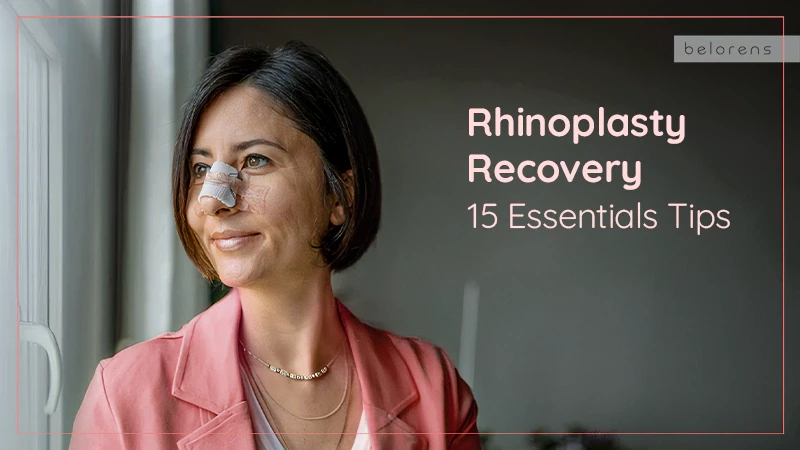
- Preparing for Rhinoplasty Surgery
- Rhinoplasty Recovery Timeline: How Long Does It Take?
- Rhinoplasty Recovery Tips for Immediately After the Surgery
- What is the Worst Day after Rhinoplasty Recovery?
- How Can I Speed Up Healing After Rhinoplasty Surgery?
- Rhinoplasty Recovery Gym: How Long Before I Can Go Back?
- Rhinoplasty Recovery Tips Dealing with Post-Surgery Emotions
- Conclusion
- FAQ
Nose job is one of the most commonly discussed cosmetic surgeries worldwide. But more often than not, it is the surgical process itself or before and after photos that win the spotlight. As a result, many people, especially younger generations, commit to a rhinoplasty surgery without precise knowledge of the invasiveness level or the recovery period and requirements that are part of its follow-up. In this post, we will go on a detailed walkthrough to prepare for your post-surgery recovery by examining how to be ready for the surgery itself, discussing the length of the surgery, the 15 essential rhinoplasty recovery tips, as well as how to deal with post-surgery emotions, and the possibility of revision surgery.
Preparing for Rhinoplasty Surgery
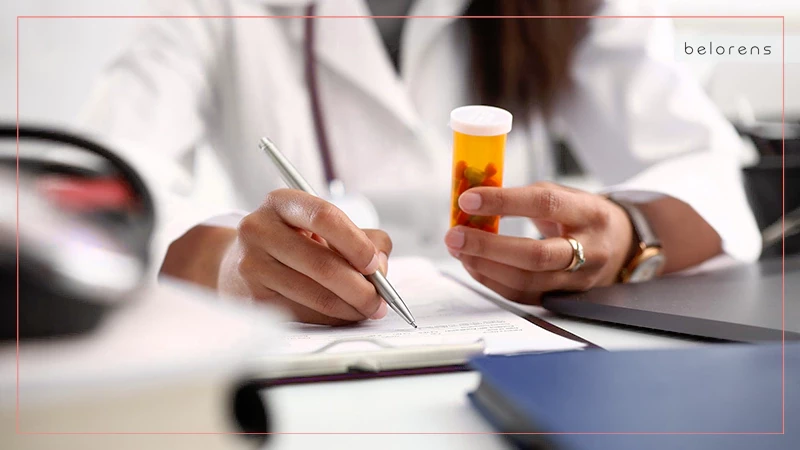
Preparing for the procedure will help you minimize both the recovery period’s harshness and duration. There are many different aspects of preparing for a rhinoplasty surgery, which we will not discuss in detail here. But here are some of the best pre-surgery practices for a smoother post-surgery rhinoplasty recovery period.
- Carefully Select Your Surgeon: Research and opt for a board-certified, experienced rhinoplasty surgeon who inspires trust and confidence. You can use our comprehensive list of qualified surgeons to find trusted rhinoplasty specialists across Turkey, UAE, UK, etc.
- Eliminate Smoking and Alcohol: Cease smoking and alcohol consumption in the weeks leading up to the surgery, as they hinder healing and increase complications.Medication Assessment: Comply with your surgeon's medication instructions, which may necessitate adjusting or temporarily discontinuing certain medications.
- Preoperative Guidelines: Abide by all preoperative instructions provided by your surgeon, which may include fasting before surgery.
- Arrange Transportation: Secure a reliable individual to transport you to and from the surgical facility on the day of the procedure.
- Procure Aftercare Assistance: Enlist the aid of someone for assistance during the initial recovery phase, as daily tasks may be challenging.
- Stock Up on Necessary Supplies: Procure essential supplies, including gauze, saline spray, and over-the-counter pain relievers, to be readily available during the recovery period.
Rhinoplasty Recovery Timeline: How Long Does It Take?
Your rhinoplasty recovery time can vary due to factors such as the complexity of the procedure and the your overall health. A rough timeline for the recovery process can provide a general understanding as follows. Knowing the duration is important because the rhinoplasty recovery tips that we are going to examine further down are categorized based on the stage of the recovery you are currently in. Here’s a short preview of your expected nose job downtime.
Immediate Recovery (First Week)
Your rhinoplasty recovery day by day process will begin by the experience of swelling, bruising, and discomfort. You may have a nasal splint or cast for support. Nasal congestion is common. Typically, people need about a week off from work or daily activities.
Find nose job before-and-after photos immediately after surgery.
First Two Weeks
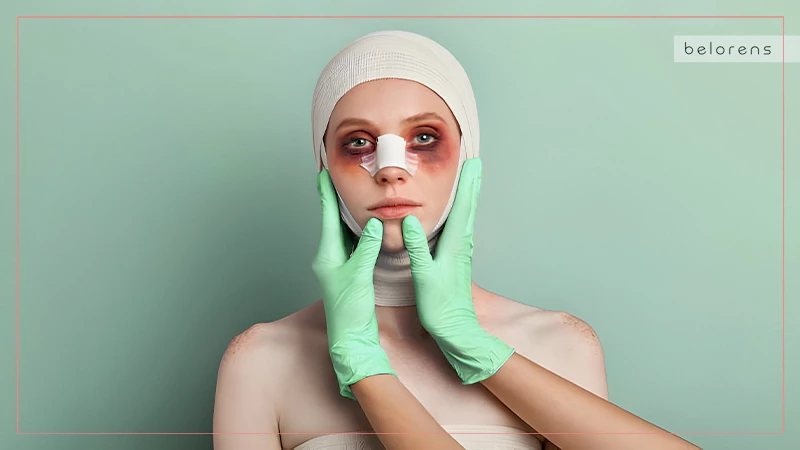
welling and bruising usually peak within the initial 48 hours and begin to subside gradually. Many individuals can return to their regular routine after the first week, though some signs of surgery may still be visible.
Two to Four Weeks
During this period, most of the swelling and bruising will resolve. Breathing through the nose improves, although some mild congestion may persist. Light exercise can be resumed, but strenuous activities should be avoided.
Six Weeks to Three Months
By this time, substantial improvement in the nose's appearance should be noticeable, with any remaining swelling being minimal. Nasal breathing should return to near normal, and most people can engage in their regular exercise routine.
You can also join the rhinoplasty discussion at Belorens, which will allow you to use other people’s experiences in nose job recovery!
Rhinoplasty Recovery Tips for Immediately After the Surgery
Finally, in this part, we can evaluate the 15 most important rhinoplasty recovery tips to ensure that your immediate post-surgery experience, followed by the 1-year duration of general recovery, goes as smoothly as possible. Here, we have divided these rhinoplasty operation recovery tips into three specific categories, these being the period immediately following the surgery, the first few days and weeks after the surgery, and finally, long-term tips covering your potentially year-long recovery.
Rhinoplasty Recovery Tips for Immediately After the Surgery
These are the rhinoplasty tips that need to be carefully followed in the period immediately after the surgery. Make sure you have all the required materials for it pre-arranged for the day of the surgery.
Follow Instructions
In the immediate aftermath of rhinoplasty, it's imperative to follow your surgeon's post rhinoplasty recovery instructions to the letter. These instructions encompass a range of crucial aspects, including wound care, medication administration, and activity restrictions. By meticulously adhering to these guidelines, you minimize the risk of complications and optimize the potential for a successful recovery. Deviating from these instructions, such as skipping medications or neglecting wound care, can lead to issues like infections or delayed healing, ultimately hindering the desired outcome of your rhinoplasty.
Swelling and Bruising
Swelling and bruising are common post-rhinoplasty side effects. Applying cold compresses can significantly aid in mitigating these effects. However, it's essential to apply them correctly to avoid potential complications. Wrap the ice pack in a clean cloth, ensuring a gentle touch when applying it to the swollen areas. Properly applied cold compresses can reduce inflammation and relieve discomfort, helping you to feel more comfortable and promoting the healing process.
Protect Your Nose
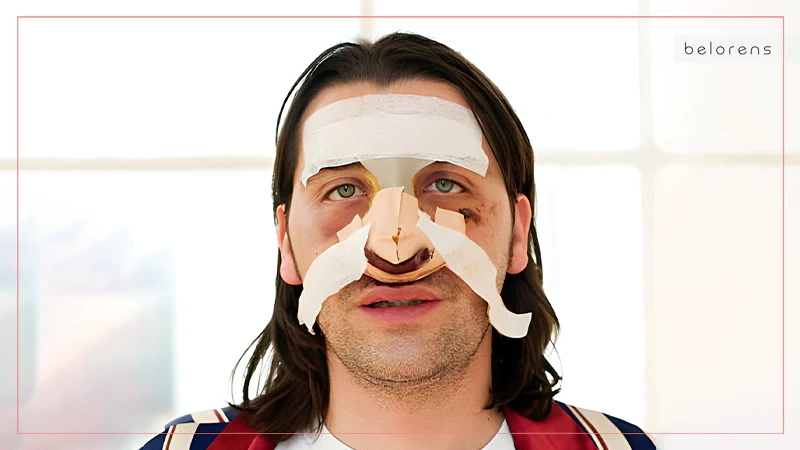
Your surgeon may place a splint or cast on your nose immediately after rhinoplasty to protect it during the early stages of recovery. It's of utmost importance to avoid any accidental pressure, bumping, or movements that could potentially dislodge or damage these protective measures. Ensuring that the splint or cast remains in place and undisturbed is critical for achieving the desired results of your rhinoplasty. Any inadvertent displacement of these protective devices could lead to complications or suboptimal outcomes.
Stay Hydrated
Maintaining proper hydration is essential for the healing process following rhinoplasty. Adequate hydration aids in tissue repair and recovery, helps reduce post-surgical swelling, and supports overall well-being during the initial rhinoplasty recovery stages. By drinking an ample amount of water, you assist your body in flushing out waste products and promoting the flow of oxygen and nutrients to the surgical area. Proper hydration also reduces the risk of complications and discomfort, such as postoperative constipation, which can occur due to the pain medications often prescribed after surgery.
Rest
Adequate rest is a cornerstone of the recovery process after rhinoplasty. Additionally, keeping your head elevated, even during sleep, is crucial to reduce swelling and discomfort in the early days following surgery. Elevating your head can be achieved by using extra pillows or a wedge pillow. This simple measure ensures that you wake up feeling less puffy and more comfortable, contributing to a smoother recovery. Quality rest allows your body to direct energy toward healing and regeneration, making it a crucial component of the postoperative phase of your rhinoplasty recovery.
Rhinoplasty Recovery Tips for the First Few Days and Weeks
There are the major rhinoplasty recovery tips that you need to adhere to in the first days and weeks after you have done the surgery. Not performing this set of essentials usually has the most dire consequences.
Gentle Cleaning
During the first few days and weeks following rhinoplasty, if your surgeon recommends it, you should gently clean the incision sites with saline solution or other provided solutions. Proper wound care not only prevents infection but also supports the rhinoplasty healing process and the overall success of your rhinoplasty. However, it's essential to handle the surgical area with great delicacy to avoid disrupting the healing process or inadvertently causing damage to the incision sites. By gently cleaning the area as directed, you ensure that the surgical area remains sterile, reducing the risk of complications.
Diet and Nutrition

A balanced diet after rhinoplasty filled with nutrient-rich foods is vital for supporting your body's healing process after rhinoplasty. It's essential to focus on whole foods, including fresh fruits, vegetables, lean proteins, and whole grains, while avoiding excessive sodium. A diet rich in essential nutrients promotes tissue healing, helps reduce post-surgical swelling, and contributes to your overall well-being during the early stages of recovery. Proper nutrition is a cornerstone of the healing process, allowing your body to repair itself more efficiently and reducing the risk of complications during your nose job recovery.
Medication Management
Your surgeon will prescribe medications for pain management and infection prevention after rhinoplasty. It's crucial to take these medications precisely as directed, ensuring that you don't skip doses or alter the schedule. Proper medication management minimizes discomfort, keeps pain and inflammation in check, and reduces the risk of complications such as infections or excessive swelling. Additionally, effective communication with your surgeon is vital to address any side effects or concerns promptly. By providing your surgeon with feedback about your medication regimen, you enable them to make any necessary adjustments to optimize your recovery process.
Limit Physical Activity

Strenuous physical activities should be avoided during the first few weeks after rhinoplasty. While light walking is encouraged and can be beneficial for your circulation, activities that elevate your heart rate or increase blood pressure should be temporarily restricted. The avoidance of strenuous activities is crucial for minimizing the risk of complications such as postoperative bleeding or prolonged swelling during the early stages of recovery. By adhering to these limitations, you promote the healing process and enhance the likelihood of achieving the desired results of your rhinoplasty.
Nasal Care
If your surgeon recommends it, the use of saline spray or nasal irrigation can be a valuable component of your post-rhinoplasty care routine. This practice helps maintain moist and clear nasal passages while reducing congestion and discomfort. However, it's essential to proceed with these methods delicately to avoid any disruption to the surgical area or potential damage. Proper nasal care supports the healing process and minimizes the discomfort associated with congestion, ensuring a smoother and more comfortable recovery from your rhinoplasty.
Rhinoplasty Recovery Tips for the Months Following Surgery
Finally, these are 5 tips for long-term rhinoplasty recovery that involve the months after the surgery is done, up to a year.
Sleeping Position

In the weeks following rhinoplasty, it's advisable to continue sleeping with your head elevated. Elevating your head while sleeping helps minimize swelling and discomfort. Achieving this position can be accomplished by using extra pillows or a wedge pillow, ensuring that you experience more restful nights and less puffiness in the morning. Proper sleep position contributes to a more comfortable recovery and promotes optimal healing, which is essential for achieving the desired results of your rhinoplasty.
Sun Protection
Direct sun exposure can be detrimental to the surgical area during the initial recovery period after rhinoplasty. Protect your nose from the sun's rays by using a high-SPF sunscreen. It's essential to acknowledge that the skin on your nose may be more sensitive due to the surgical procedure and, thus, more prone to sunburn or pigmentation changes. Adequate sun protection reduces the risk of post-surgical complications and helps maintain the integrity of the surgical site, promoting an optimal healing process and a more favorable outcome.
Emotional Well-being

It's important to recognize that emotional fluctuations are common after rhinoplasty. Feelings of anxiety, impatience, and doubt can occur. Seeking emotional support from friends, family, or a therapist, as needed, is crucial. Discussing your feelings and concerns can significantly aid your recovery, both physically and emotionally. Emotional well-being is an integral component of the postoperative phase, helping to reduce stress and promote an overall positive recovery experience. Open communication with your support network can provide you with the emotional strength needed to navigate the recovery process successfully.
Transportation
During the initial recovery period after rhinoplasty, it's essential to arrange for someone to drive you to follow-up appointments and assist with errands. The effects of surgery, such as swelling, grogginess resulting from postoperative medications, or the presence of nasal dressings or casts, can make driving unsafe. Reliable transportation ensures that you attend necessary appointments and run essential errands without added stress. Properly planned transportation contributes to a smoother recovery and aids in achieving the best possible outcome of your rhinoplasty.
Scarring and Scar Care
The management of scarring is a vital aspect of the recovery process, particularly if your rhinoplasty involves external incisions. Your surgeon will provide instructions on how to care for your surgical scars properly. Scar care typically includes keeping the incision sites clean and using specialized scar care products, such as silicone gels or sheets, to support the healing process. Addressing scarring during the recovery phase can significantly contribute to achieving the desired outcome of your rhinoplasty by minimizing the appearance of scars in the long term. Proper scar care helps ensure that the results of your surgery are both aesthetically pleasing and long-lasting.
What is the Worst Day after Rhinoplasty Recovery?
The initial days following rhinoplasty are typically the most challenging, with the first or second day after surgery often regarded as the most difficult. During this time, you may encounter heightened swelling, bruising, discomfort, and congestion, potentially exacerbated by packing or nasal tissue swelling.
How Can I Speed Up Healing After Rhinoplasty Surgery?
To expedite the healing process after rhinoplasty, consider the following suggestions.
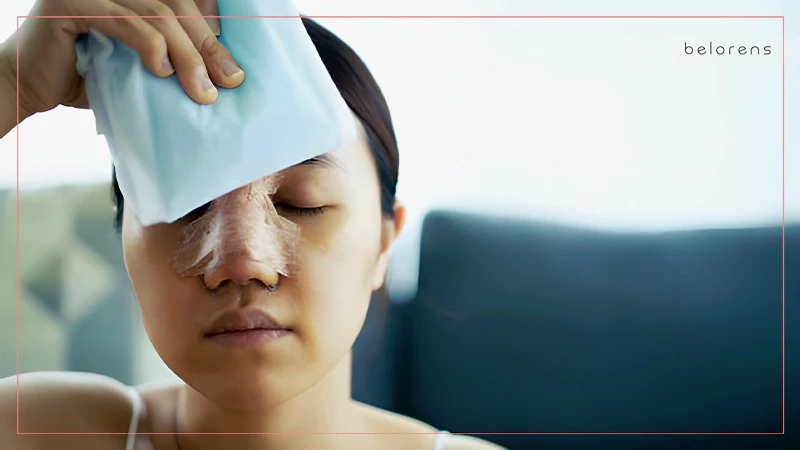
- Adhere to Surgeon's Instructions: Strictly follow the post-operative care directives given by your surgeon, encompassing prescribed medications, activity restrictions, and scheduled follow-up appointments.
- Rest with Elevated Head: Prioritize rest, ensuring your head remains elevated, even during sleep, to minimize swelling.
- Apply Cold Packs: Reduce swelling and bruising by applying cold packs to affected areas, adhering to your surgeon's guidelines on timing and duration.Maintain Hydration and a Balanced Diet: Support healing by staying hydrated and consuming a nutritious diet rich in vitamins and minerals.
- Avoid Strenuous Activities: Steer clear of vigorous physical activities, such as heavy lifting or intense workouts, as they can exacerbate swelling and impede the healing process.
- Limit Sun Exposure: Shield your skin from the sun to prevent potential pigmentation changes, particularly if your nose is still healing and susceptible to sun damage.
- Refrain from Smoking and Alcohol: Steer clear of smoking, as it can hinder healing, and limit alcohol consumption, considering potential interactions with medications.
Also Read: Do's and Don'ts After Rhinoplasty
Rhinoplasty Recovery Gym: How Long Before I Can Go Back?
The timeframe for resuming gym activities post-rhinoplasty varies, typically ranging from 2 to 4 weeks. Individual healing and the extent of the surgery play a role. It's advisable to consult your surgeon for personalized guidance based on your specific circumstances.
Rhinoplasty Recovery Tips Dealing with Post-Surgery Emotions
We already mentioned emotional well-being as one of the most important cases in the long-term rhinoplasty recovery tips. But since this issue seems to be often critical, here we will examine it with a little bit more detail. It's common to experience a range of emotions after seeing changes in your appearance. Some individuals may feel excited and more confident, while others might experience anxiety or even a sense of loss. Remember that it's natural to have mixed emotions. Take your time to adjust and be patient with yourself. Focus on the reasons you chose the surgery in the first place and the positive aspects of the change.
Also Read: The Impact of glasses on Rhinoplasty Recovery
Seeking Support from Friends, Family, or a Therapist
Talk to your close friends and family about your feelings. Sharing your emotions with loved ones can be therapeutic and provide much-needed emotional support. Consider consulting a therapist or counselor, especially if you're struggling with body image concerns or significant emotional changes. They can help you navigate these feelings and develop coping strategies.
Long-Term Recovery

Understand that the emotional recovery is often a long-term process, just like the physical recovery. Your feelings may evolve as you become more accustomed to your new appearance.
Stay connected with your surgeon and follow up on postoperative appointments to address any concerns or questions about your results. Continue to care for your emotional well-being throughout the recovery period and beyond. Engage in activities that promote self-confidence and self-care.
Potential for Revision Rhinoplasty
You should note that even at the hands of the most capable surgeon, there is always a chance for a revision rhinoplasty to be needed. Some people who already had difficulty with dealing with the first surgery often take the news of the need for another surgery rather hard. Therefore, make up your mental resilience in case such a need arises.
Conclusion
In the initial few hours following surgery, patients are under the vigilant care of dedicated healthcare professionals who prioritize their well-being and recovery. This phase involves meticulous monitoring, pain management, and an emphasis on ensuring the patient's physical and emotional comfort. Whether it's a minor procedure or a significant surgical intervention, the medical team diligently monitors vital signs, administers pain relief, and promptly addresses any postoperative concerns. As patients gradually emerge from anesthesia and regain their alertness, they receive sustenance and guidelines for their ongoing recovery. This immediate postoperative stage lays the foundation for a seamless and successful healing journey, guiding patients toward restored health and vitality.
But there is also much that the patient needs to do on their own to ensure a swift rhinoplasty recovery. By following the tips in this article, you can do just that!
FAQ
When Can I Return to Work or Normal Activities?
The timing varies, but most patients can return to work and normal activities within 1-2 weeks, depending on the extent of the procedure and individual healing. Strenuous activities should be avoided for a few weeks.
Can I Wear Glasses or Sunglasses During Rhinoplasty Recovery?
You'll need to be cautious with eyeglasses or sunglasses, especially if they rest on the nose. Your surgeon will advise you on when and how you can safely resume wearing them.
How Can I Best Take Care of My Incisions and Dressings?
Follow your surgeon's instructions for incision care. In some cases, saline solutions are used to keep the incisions clean. Your surgeon or nursing staff will guide you in dressing care.
When will I See the Final Results of my Rhinoplasty?
Rhinoplasty results evolve over time. Initial improvements are visible as swelling subsides, but it can take several months for the nose to fully settle and for the final results to become apparent.
Can I Wear Makeup to Conceal Postoperative Marks and Bruising?
Many patients find makeup can help conceal signs of bruising and discoloration. Consult with your surgeon to determine when it's safe to apply makeup after surgery.
Can I Resume Regular Exercise and Physical Activities After Rhinoplasty?
Strenuous exercise and activities should be avoided for several weeks after surgery to prevent complications. Your surgeon will provide guidance on when it's safe to resume physical activities.
How Much does Rhinoplasty Recovery vary From Person to Person?
Recovery experiences can vary widely, depending on factors like the extent of the procedure, individual healing, and adherence to postoperative instructions. It's important to follow your surgeon's guidance for the best recovery outcomes.
When Can I Resume Wearing Contact Lenses after Rhinoplasty?
Your surgeon will advise you on when it's safe to resume wearing contact lenses. This typically depends on the healing progress and comfort level.

